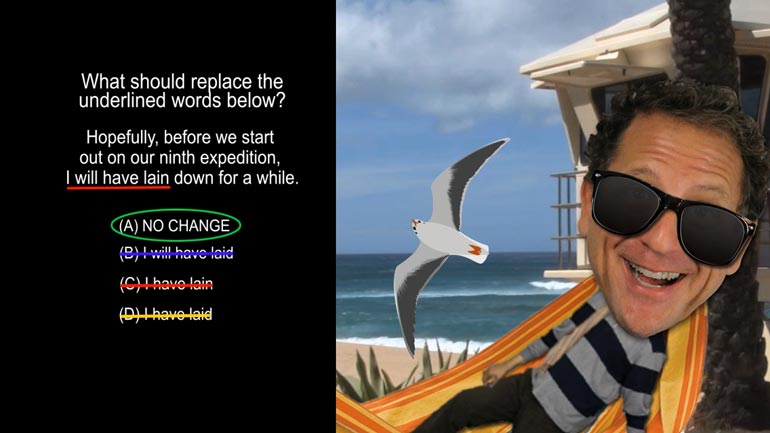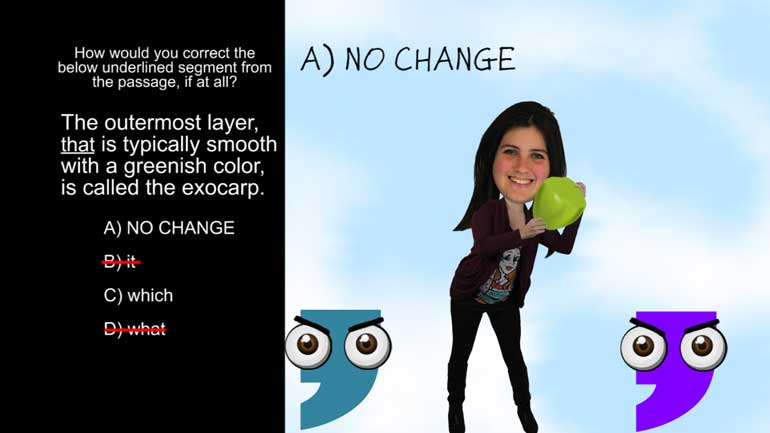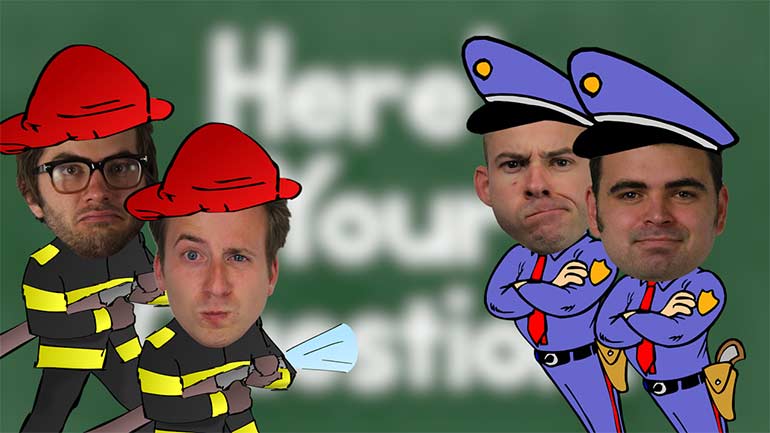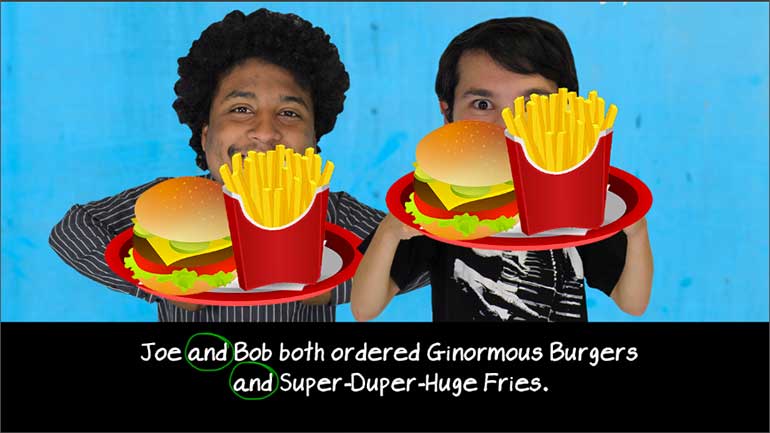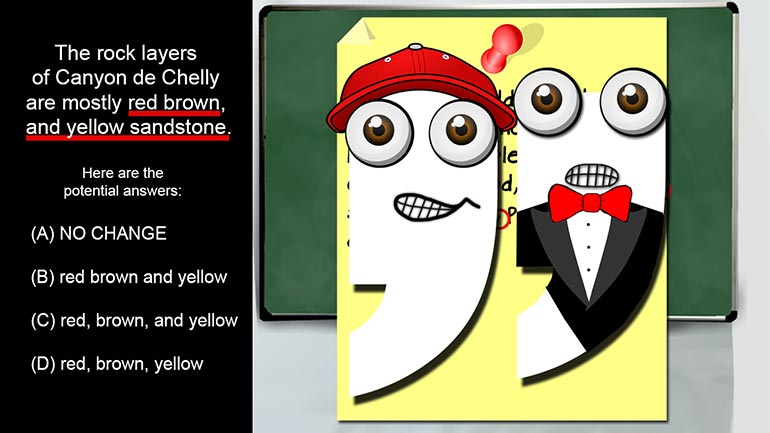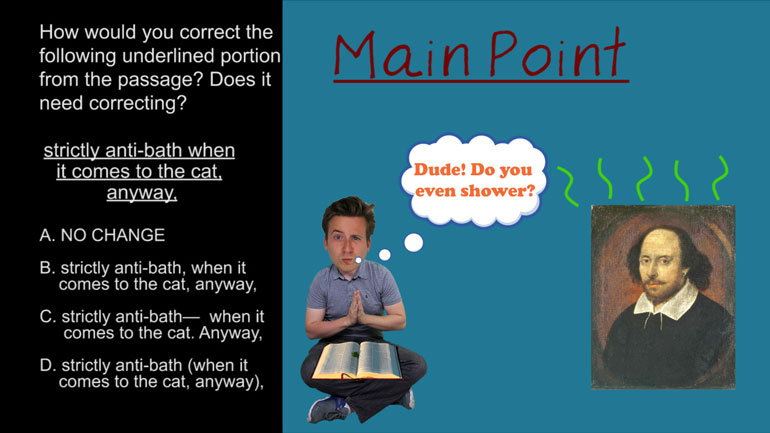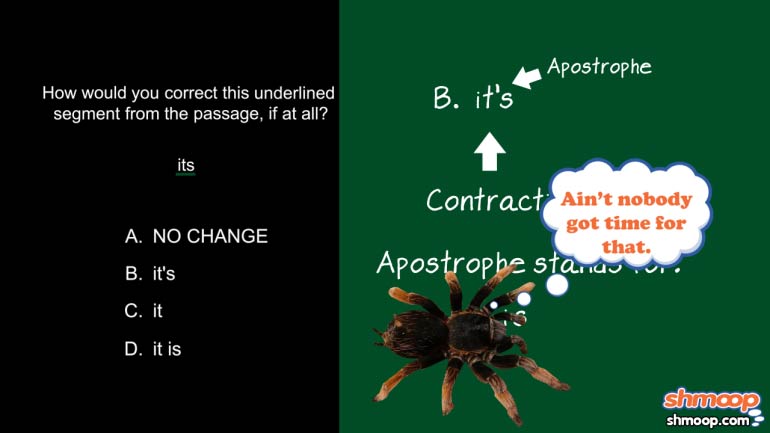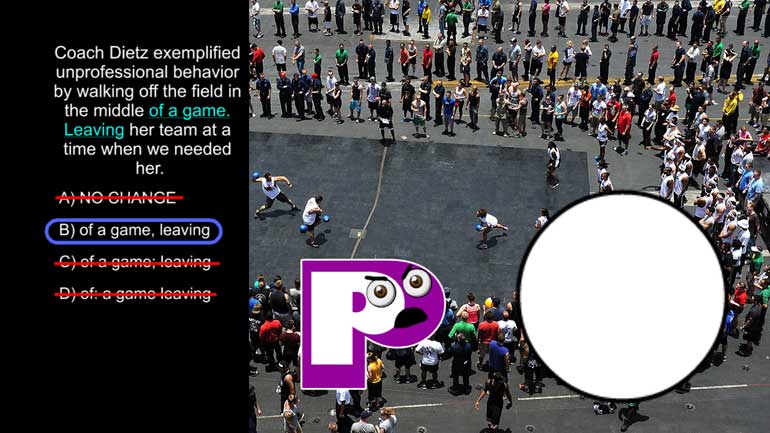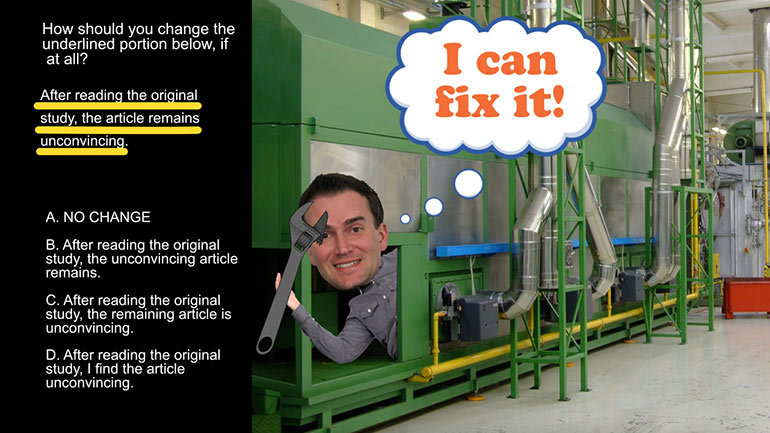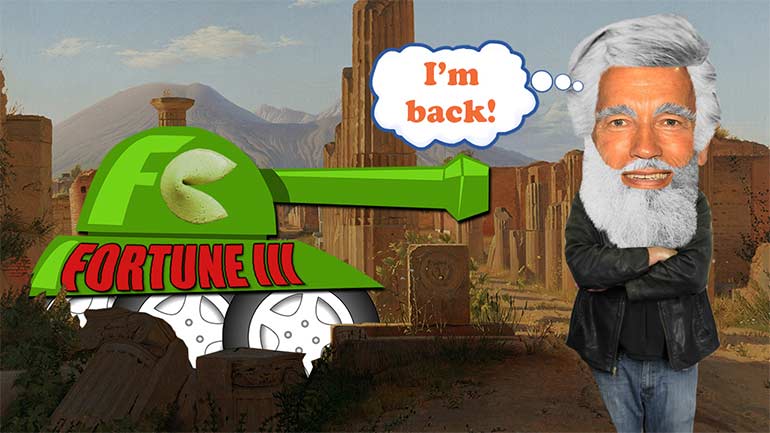ShmoopTube
Where Monty Python meets your 10th grade teacher.
Search Thousands of Shmoop Videos
Usage and Mechanics Videos 116 videos
ELA Drills, Advanced: Punctuation 1. Which option best completes the sentence?
ACT English: Grammar and Usage Drill 1, Problem 1. What should replace the underlined word?
ACT English: Grammar and Usage Drill 1, Problem 2. Does the underlined word match the subject and tense?
ACT English 1.12 Passage Drill 199 Views
Share It!
Description:
ACT English: Passage Drill 1, Problem 12. Correct comma use.
Transcript
- 00:03
Here’s your Shmoop du jour, brought to you by scientists who specialize in coconuts.
- 00:08
Hey, there’re worse things to do with your life.
- 00:13
Check out the following passage.
- 00:32
How would you correct the following underlined portion from the passage? Does it need correcting?
- 00:36
the exocarp and the mesocarp,
Full Transcript
- 00:40
Here are the potential answers...
- 00:44
To answer this question correctly, we need to wrestle with the eternal problem of how
- 00:48
to correctly use commas.
- 00:50
Let’s start by taking a look at (D), which places a comma after “exocarp.”
- 00:54
This is incorrect because there’s no grammatical reason to place a comma here.
- 00:58
Doing so unnecessarily separates “and the mesocarp” from the rest of the sentence.
- 01:04
Guess we’d better move on before it gets separation anxiety.
- 01:11
Maybe choice (C) will make a better show of itself.
- 01:14
Nah, not really. Like (D), choice (C) places a comma after “exocarp.”
- 01:18
Taking out the word “and” does nothing to make this choice grammatically correct.
- 01:22
If anything, it makes the sentence even more confusing by tricking us
- 01:25
into thinking we’ve got a list on our hands.
- 01:28
Commas are only needed when more than two things are being listed.
- 01:32
For example, if we were talking about the exocarp, mesocarp, and endocarp.
- 01:39
Then we would need commas to separate them.
- 01:43
This, of course, is not the case, so we can move on to the next option.
- 01:46
OK, time to compare choices (A) and (B), which are having a serious disagreement.
- 01:51
Choice (A) separates “the exocarp and the mesocarp” from the rest of the sentence
- 01:55
with commas, while choice (B) uses no commas at all.
- 01:58
The rule of thumb is that commas separate things that are nonessential to the sentence,
- 02:02
while things that are essential should be comma-free.
- 02:07
An easy way to tell if a part of a sentence is essential
- 02:10
is to omit the part in question as you read the sentence out loud.
- 02:15
Check it out: “when you buy a coconut at the super market are removed and what you see is the endocarp.”
- 02:22
Wow, that was gibberish.
- 02:24
Removing “the exocarp and the mesocarp” definitely takes something essential from the sentence.
- 02:28
Therefore, comma-free choice (B) is the correct answer.
- 02:31
A lesson learned the hard way: it’s best not to read sentences out loud while in public.
Related Videos
ACT English: Punctuation Drill 3, Problem 1. How should this sentence be changed so that it is grammatically correct?
ACT English: Punctuation Drill 2, Problem 1. Which choice of punctuation best completes the sentence?
ACT English: Punctuation Drill 2, Problem 2. Where should the semi-colon be placed?
ACT English: Punctuation Drill 3, Problem 2. How should we properly hyphenate the words in this sentence?
ACT English: Punctuation Drill 3, Problem 4. Which choice best formats this list of items?










